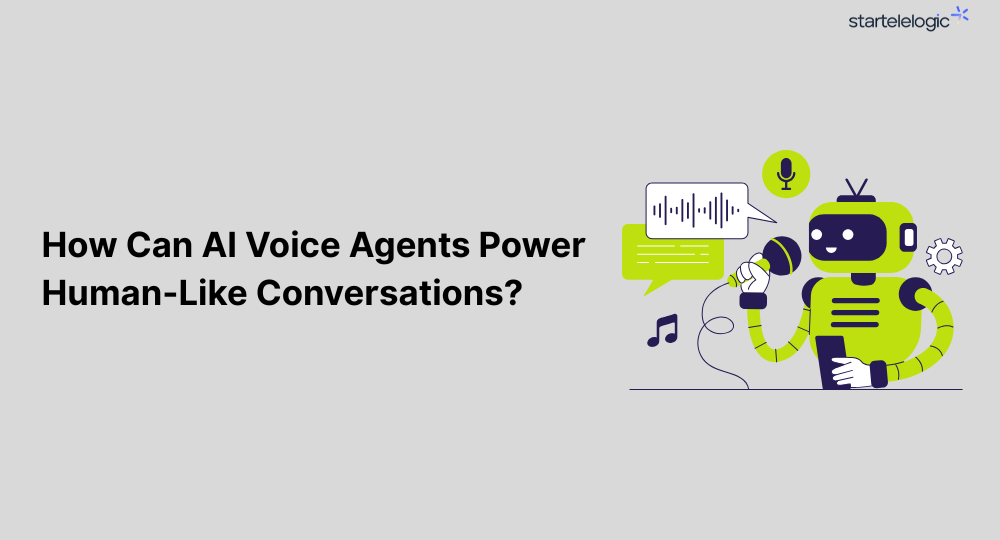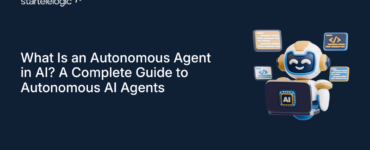The way we interact with technology is undergoing a fundamental shift. From keyboards and touchscreens, we are now moving toward voice-first interactions. In fact, according to a Juniper Research report, the number of digital voice assistants in use worldwide is expected to surpass 8.4 billion units by 2024, outnumbering the human population. Similarly, 71% of consumers already prefer using voice search over typing because it feels faster and more natural.
At the heart of this transformation are AI voice agents—systems capable of understanding speech, reasoning contextually, and responding in a way that feels increasingly natural. They are no longer just tools for convenience but are becoming an integral part of everyday life, shaping how we shop, learn, work, and even access healthcare. Their role is not limited to answering commands but extends to building trust and delivering personalized interactions.
But what makes these agents capable of powering human-like conversations? Let’s explore the underlying technologies, challenges, and future possibilities.
How Can AI Voice Agents Power Human-Like Conversations?
In the early days, voice assistants like Siri or Alexa could handle only simple commands—setting alarms, checking the weather, or playing music. They relied heavily on pre-programmed responses, which often made conversations feel robotic.
Today, AI voice agents are powered by large-scale neural networks, natural language understanding (NLU), and generative AI models. These systems no longer just retrieve information—they construct meaning, interpret user intent, and generate dynamic responses. This evolution allows them to engage in dialogue that is less transactional and more conversational.
The adoption of voice technology reflects this shift. According to Juniper Research, there will be over 8.4 billion voice assistants in use globally by 2024, surpassing the world’s population. In fact, 71% of consumers now prefer using voice search over typing, and enterprises are increasingly integrating AI-powered voice solutions into customer service and productivity tools.
Key drivers of this evolution include:
- Advances in speech recognition: Turning spoken words into accurate text with near-human precision.
- Contextual understanding: Remembering what was said earlier in a conversation and adapting accordingly.
- Generative language models: Producing fluid, natural responses instead of relying on rigid scripts.
This rapid growth signals a paradigm shift: voice is no longer a futuristic novelty—it is becoming the default interface between humans and machines.
How AI Voice Agents Understand Human Speech
Human conversation is complex. People pause, change tone, and often leave thoughts incomplete. To keep up, AI voice agents must process speech the way humans do.
- Automatic Speech Recognition (ASR): Converts audio signals into text with speed and accuracy, even in noisy environments.
- Natural Language Processing (NLP): Interprets the meaning behind the words, accounting for slang, ambiguity, and contextual nuances.
- Dialogue Management: Decides how to respond by weighing context, user intent, and the flow of conversation.
- Natural Language Generation (NLG): Crafts responses that sound human, complete with intonation, pacing, and sometimes even humor.
This pipeline allows an AI system to move from hearing a phrase like “Book me a table for tonight” to executing the correct action—checking the calendar, inferring location preferences, and confirming the reservation—all while maintaining conversational flow.
Making Conversations Feel Human
It’s not enough for AI to simply answer correctly; it must also sound human. To achieve this, AI voice agents rely on several design principles:
- Context Retention: Remembering prior exchanges to maintain coherence. For example, if you say “Find Italian restaurants nearby” and follow up with “Book one for 7 pm,” the system must connect the dots.
- Emotional Intelligence: Detecting tone, sentiment, or stress in the speaker’s voice and adjusting the response. A supportive tone when someone sounds frustrated can make interactions feel more natural.
- Personalization: Tailoring responses to individual preferences, past interactions, and even communication style.
- Proactive Engagement: Offering helpful suggestions instead of only reacting. For instance, reminding you of traffic delays before your scheduled meeting.
This human-like quality doesn’t mean imitating humans perfectly—it means creating interactions that feel intuitive, fluid, and effortless.
Advanced Applications of AI Voice Agents
While consumer devices like smart speakers are the most visible use cases, AI voice agents are rapidly transforming industries:
- Healthcare: Virtual voice nurses providing medication reminders, triaging patient symptoms, and reducing clinical workload.
- Customer Service: AI agents that handle complex support queries, offering empathetic responses and resolving issues faster than call centers alone.
- Education: Personalized voice tutors that adapt to each student’s pace, providing encouragement and real-time feedback.
- Automotive: Voice-powered in-car assistants that help with navigation, entertainment, and even monitoring driver fatigue.
- Enterprise Productivity: AI voice companions integrated into workflow tools, scheduling meetings, transcribing calls, and summarizing key insights.
Each of these applications highlights not just automation but augmentation—freeing humans from repetitive tasks while enhancing overall experiences.
Challenges in Building Truly Human-Like Voice Agents
While the progress of AI voice agents is remarkable, creating conversations that genuinely feel human is still a complex task. Several challenges stand in the way:
Accent and Dialect Diversity
Human speech is incredibly diverse. People speak in different accents, dialects, and regional variations—even within the same language. For example, English spoken in London, New York, and Mumbai can sound vastly different. AI voice agents often struggle with these variations, especially when background noise or rapid speech is involved. Building systems that adapt to a wide range of speaking styles without requiring users to “speak like a machine” remains a significant hurdle.
Ethical Boundaries and Privacy
Voice interactions often involve sensitive personal data—medical details, financial information, or private conversations. If not handled responsibly, this data could be misused. Designing AI voice agents that respect privacy, give users control over what is stored, and operate within clear ethical boundaries is essential. Without trust, even the most advanced technology will fail to gain widespread adoption.
Bias in Training Data
AI systems learn from vast datasets, but if those datasets overrepresent certain demographics while underrepresenting others, bias seeps into the system. This can result in inaccurate responses or poor recognition of underrepresented voices, such as minority accents or less common languages. Ensuring fairness requires careful data curation, ongoing monitoring, and inclusive design practices.
Trust and Transparency
One of the biggest concerns is whether users know they’re speaking with an AI or a human. If AI voice agents sound too real without proper disclosure, it can create discomfort or even ethical issues. Transparent design—such as agents identifying themselves as AI upfront—helps users set the right expectations. Building trust means making AI not only smart but also honest and reliable.
Conclusion
AI voice agents represent one of the most exciting frontiers in conversational AI. They combine advanced speech recognition, natural language understanding, and generative modeling to power interactions that feel less like commands and more like conversations. While challenges remain—ranging from inclusivity to ethics—the potential is vast.
From healthcare to education, from personal productivity to customer service, AI voice agents are set to redefine how we communicate with machines. And as the technology matures, the line between talking to a computer and talking with one will continue to blur.




